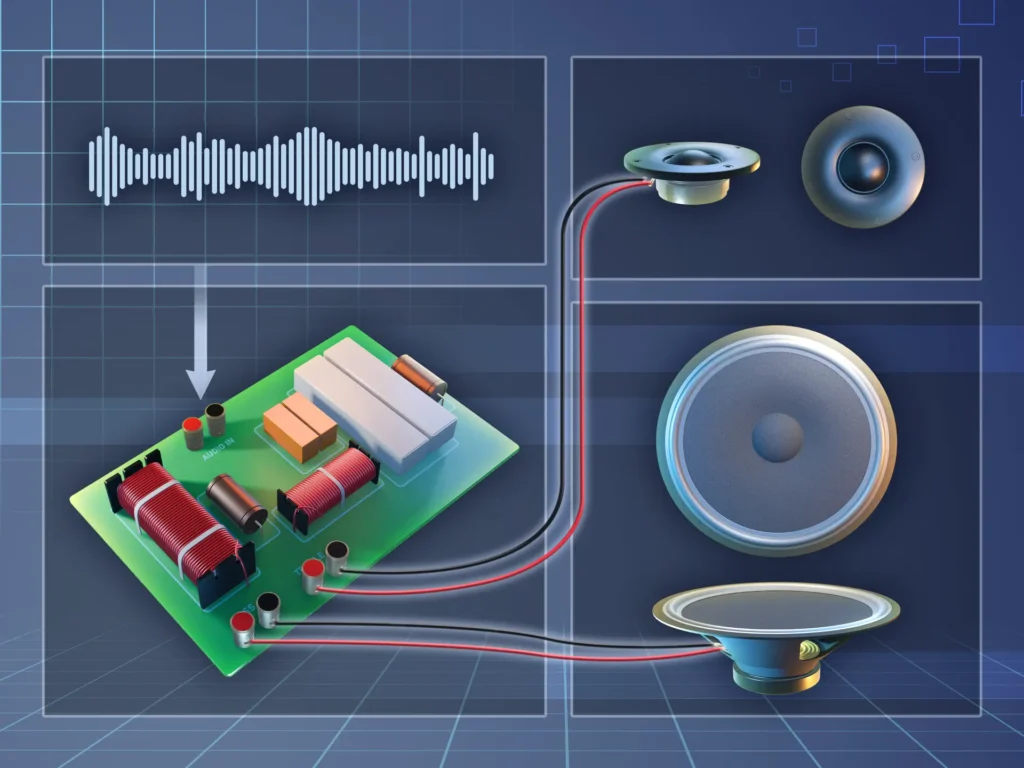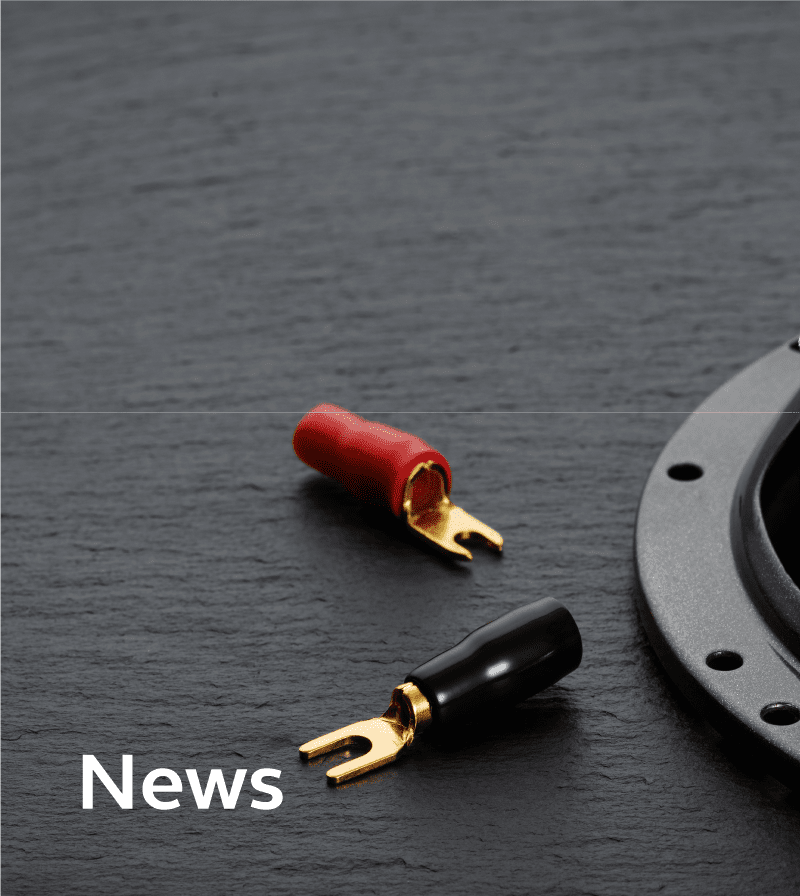
What is a Speaker Crossover?
A speaker crossover is an essential component in multi-driver speaker systems. Its primary role is to divide a full-range audio signal into separate frequency bands—high, mid, and low—directing each band to the appropriate driver within the speaker. For example, high frequencies are sent to the tweeter, midrange frequencies to the midrange driver, and low frequencies to the woofer. This division ensures that each driver only reproduces the frequencies it is best suited for, optimizing the overall sound quality.
Crossover circuits can either be housed within speaker cabinets or be part of external processing systems. By allocating the correct frequency range to each driver, a crossover system prevents distortion, maximizes speaker efficiency, and enhances audio clarity, making it a critical element in any high-quality sound setup.
Why Speaker Crossovers are Essential for High-Quality Sound
Speaker crossovers are crucial for delivering high-quality sound because they prevent drivers from reproducing frequencies outside of their optimal range, which can result in distortion and diminished sound accuracy. Without a crossover, woofers might attempt to play high-frequency sounds, while tweeters could receive low-frequency signals, leading to poor performance and potential damage.
The crossover ensures a smooth transition between frequency bands, allowing the speaker system to produce a balanced and full-range audio output. By carefully controlling which frequencies reach each driver, crossovers help maintain a flat frequency response and improve the overall soundstage and imaging, contributing to a richer, more immersive listening experience.
Types of Speaker Crossovers: Active vs. Passive
There are two main types of speaker crossovers: active and passive.
- Passive Crossovers
These are built into the speaker cabinet and placed between the amplifier and the speaker drivers. Passive crossovers use components like inductors, capacitors, and resistors to filter the frequencies without requiring a separate power source. They are commonly used in home and commercial audio systems because of their simplicity and ease of installation.
- Active Crossovers
Active crossovers are placed before the amplifier and require a power source to function. They divide the audio signal at line level, before amplification, allowing for greater precision in controlling the frequency distribution. Active crossovers are frequently used in professional sound systems and powered speakers because they offer superior control over the sound and allow for separate amplifiers to drive each driver.
Both types are effective, but the choice between active and passive depends on your audio system’s complexity and your need for control over sound quality.
Key Components of a Speaker Crossover
The effectiveness of a speaker crossover depends on several key components:
- Inductors: These components limit high-frequency signals and allow low frequencies to pass through to the woofers. Inductors are crucial for creating a low-pass filter that blocks unwanted high frequencies from reaching bass drivers.
- Capacitors: Capacitors are used in high-pass filters to block low frequencies and allow high frequencies to reach the tweeters. Their role is to ensure that tweeters only handle the frequencies they are designed for, preventing distortion.
- Resistors: Resistors help control the flow of current and balance the signal distribution across the different drivers. They can also be used to adjust the output levels of certain drivers, ensuring a smooth and balanced sound across all frequencies.
These components work together to create precise filtering, allowing each speaker driver to handle the appropriate frequency range, improving sound clarity and preventing damage to the drivers.
How to Choose the Right Speaker Crossover for Your System
Choosing the right speaker crossover for your system depends on several factors:
Driver Configuration
If you are using a 2-way or 3-way speaker system, you’ll need a crossover that matches the number of drivers and the frequency ranges they handle. The crossover points should align with the drivers’ capabilities.
System Power and Amplification
If you’re using passive speakers, a passive crossover is often the best choice for simplicity. However, if you’re using powered speakers or want more control over the sound, an active crossover can provide superior flexibility.
Crossover Frequency and Slope
Each crossover has a specific frequency point where it divides the signal. You should match this to the recommended crossover points provided by your speaker’s manufacturer. The slope, or the rate at which the frequencies roll off, also plays a key role—common slopes include 12 dB/octave and 24 dB/octave, affecting how sharply the transition between drivers occurs.
Room Acoustics
Consider your listening environment. Larger rooms may benefit from crossovers with wider frequency response adjustments, while smaller rooms may require more precise tuning to avoid overwhelming low or high frequencies.
Maximizing Audio Quality with the Right Speaker Crossover
The right speaker crossover can dramatically enhance the audio quality of your system. Properly designed crossovers ensure each driver operates within its optimal range, preventing distortion and delivering a clear, balanced sound. A well-calibrated crossover will also ensure seamless transitions between frequencies, avoiding gaps or overlaps that can lead to inconsistent sound reproduction.
To maximize your audio quality, ensure that the crossover is correctly matched to your speaker drivers, and if using an active crossover, take advantage of the additional control to fine-tune the frequency response to suit your listening environment. The goal is to achieve a smooth, even sound that accurately reflects the original recording, allowing you to fully enjoy a detailed and immersive audio experience.



